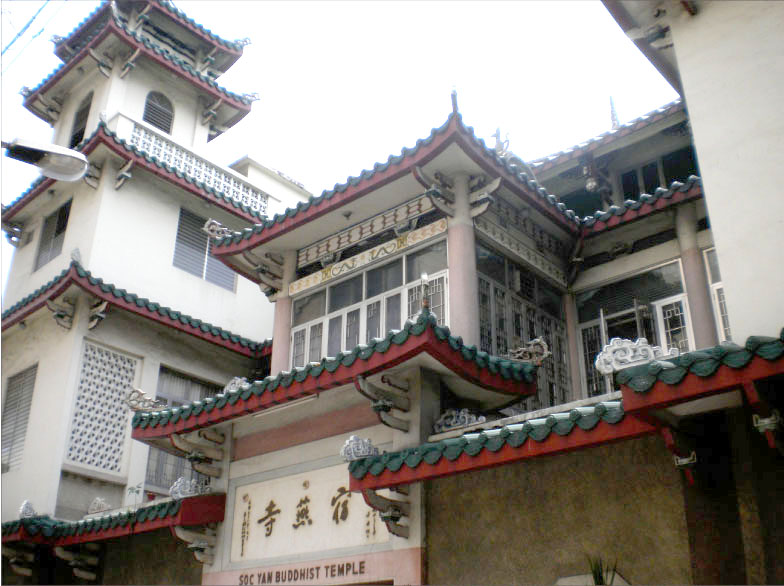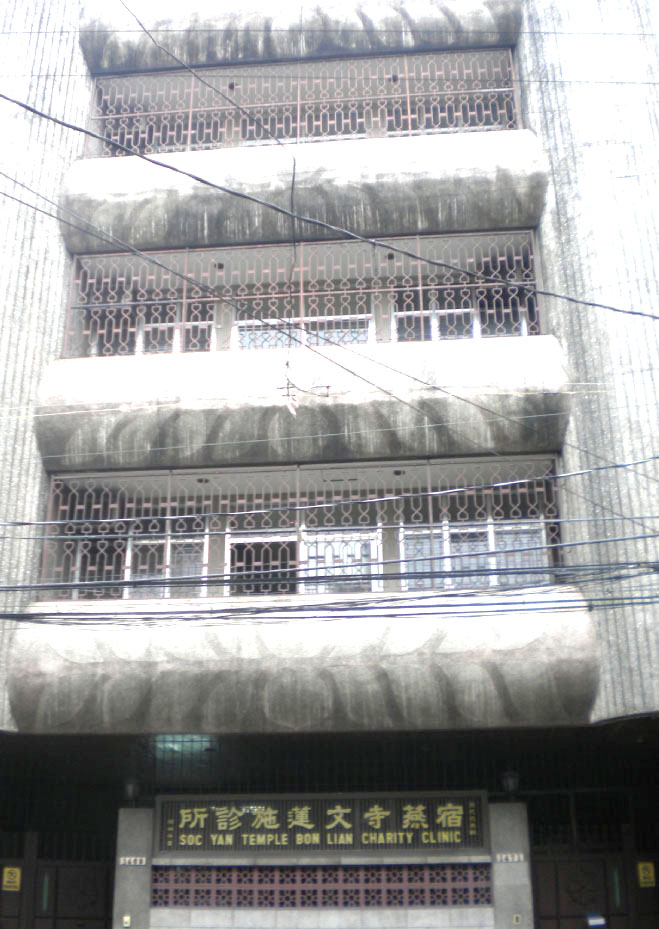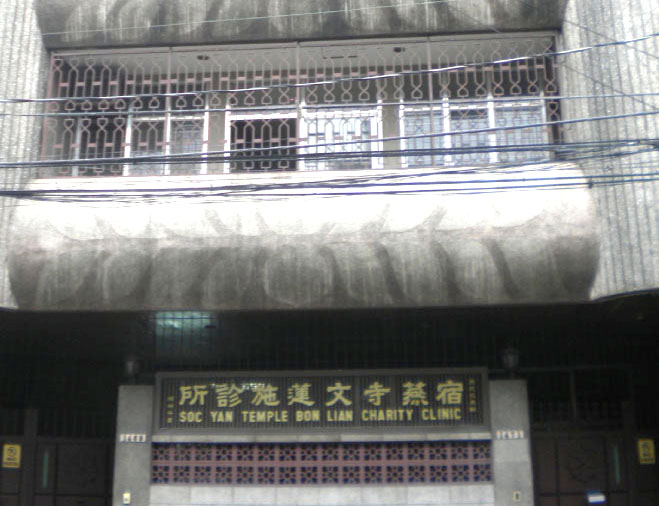Editors Note: This is the 19th of a series about the 36 Chinese Buddhist temples of the Philippines. Much of the information is from a thesis of Venerable Chuanmiao (Hsuan Chuang University, 2008), a Buddhist monk affiliated with the Thousand Buddha Temple in Quezon City.
19. Soc Yan Temple (宿燕寺)
1404 F. Guerrero Street, Tondo, Manila | Tel.: 251-6916 • 252-0835
This temple’s origins can be traced to the lay sisters of one family. Yangjia (楊嘉) was born in Jinjiang in 1872, married at 18, and had two daughters. Widowed at 22, she raised her daughters for a few years and then, following the custom of the time, arranged their marriages in a neighboring village. This meant entrusting her daughters to their future husbands’ families.
She retired to a cave dwelling in Xiaowushishan (小烏石山) and carried out private spiritual practice there. She later established the Soc Yan Temple (宿燕寺) in the same place.
Meanwhile, her two daughters grew up, married, and had one daughter each. Both were also widowed early and brought their daughters to join Yangjia at the Soc Yan Temple.
Wenlian (文蓮) was born in 1911, and Huangji (黃吉) in 1926. Wenlian was 15 years the senior of Huangji, but the two were very close and grew up as lay sisters at their maternal grandmother’s temple. By 1939, Wenlian was of age and had taken charge of the temple. Her mother passed away in 1933.

Times were hard and Wenlian went to Manila to beg for alms. Unable to return home because of Japanese aggression in Asia leading to World War II, she remained in Manila under the guidance of Xingyuan, abbot of Seng Guan Temple.
In 1941, she had already gathered a few women around her to practice Buddhism. She returned to Fujian to repair her own temple in 1947, and then went back to Manila in 1949 to start building the Soc Yan Temple.
It opened in 1952 with Wenlian as the first abbess. Wenlian soon invited her younger cousin Huangji to come and help, but it was only in 1958 that Huangji arrived after a two-year stopover in Hong Kong to arrange her travel papers.
Wenlian died of a cerebral hemorrhage in early 1960. She was 49.
Huangji invited Ruijin of Seng Guan Temple to be honorary abbot of the temple, while she managed day-to-day affairs.
Over the next 10 years she made several improvements to the temple, including renovation of the main shrine in 1970.
Wanting to memorialize Wenlian’s concern for the poor, the temple community opened a charity clinic in 1978 as the Soc Yan Temple Bon Lian (Hokkien for Wenlian) Charity Clinic, in a four-storey building on Narra Street.
In 1980, Huangji was ordained by Ruijin, taking the Dharma name Guangren (廣仁). When Ruijin died in 2005, Guangren took over as temple abbess until her death in December 2011 at 85.
At present, the temple is headed by Guangming (廣明), who was ordained in Taiwan and has been teaching the classes on Buddhism at the Philippine Academy of Sakya and Samantabhadra Institute.

Main buildings. The building has three floors, with the Maitreya shrine, ancestral hall, and refectory on the ground floor, the main shrine to the three Buddhas and a chapel to Ksitigarbha on the second floor, and living quarters on the third floor.
Leadership and primary activities. Four nuns and four lay sisters live at the temple, five of them local Chinese women who were taken in and raised there from a young age.
The temple is known as a women’s temple, with a special devotion to Ksitigarbha. The monthly devotion day is the sixth of the lunar month. The Guanyin feast days are observed on the actual dates, and the end of the lunar new year is marked with three days chanting of the thousand names of the Buddha. — First published in Tulay Fortnightly, Chinese-Filipino Digest 25, no. 22 (April 23-May 6, 2013): 9.
